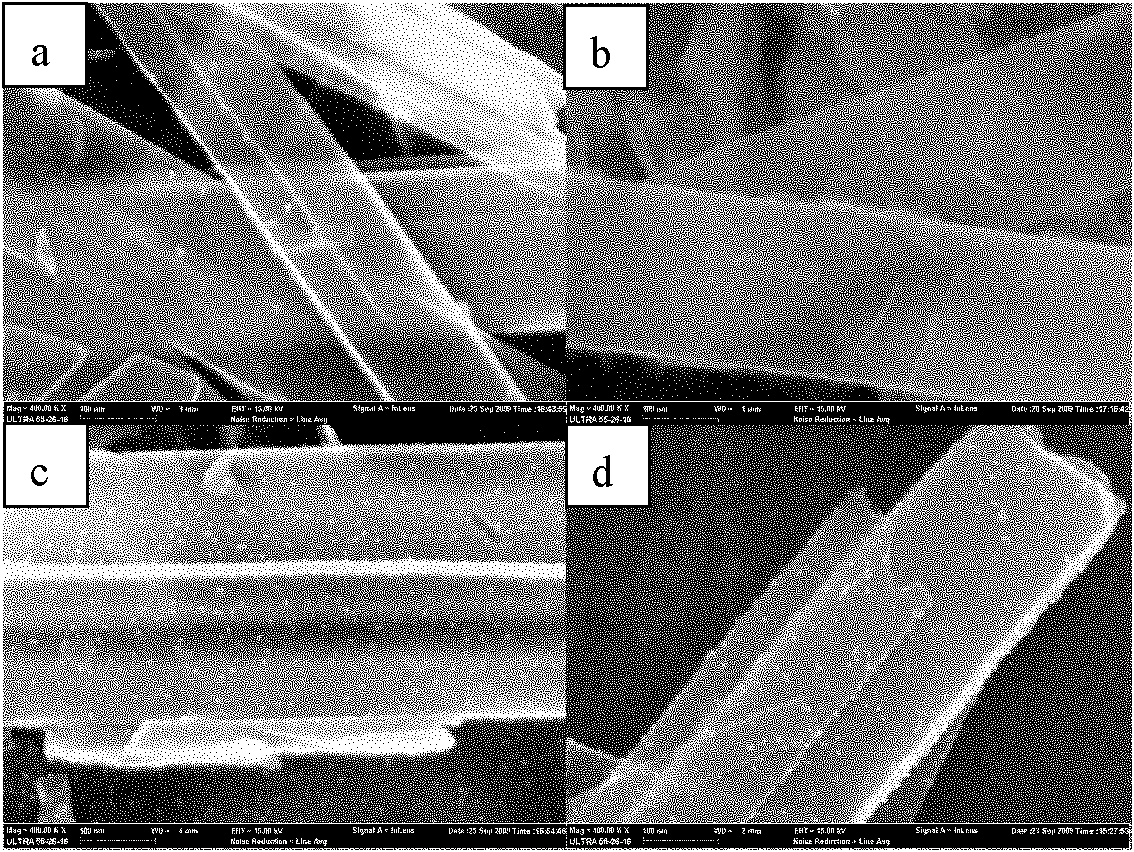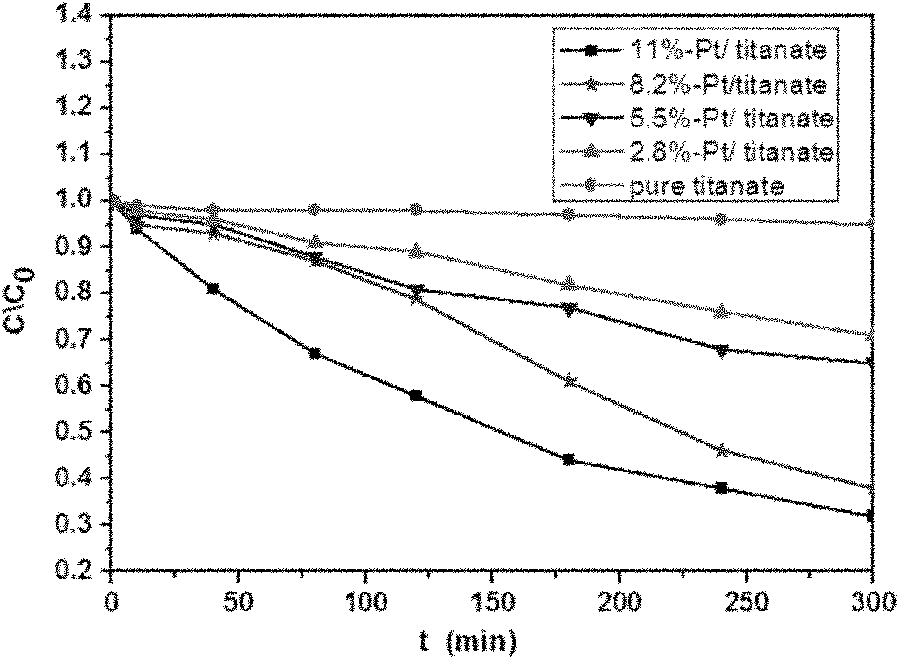Self-assembly method of precious metal quantum dot/one-dimensional titanate nanoribbon heterojunction material
A precious metal and quantum dot technology, applied in nanomaterials and nanometer fields, can solve problems such as lack of technical means, and achieve the effect of simple process, high degree of controllability, and low equipment requirements
- Summary
- Abstract
- Description
- Claims
- Application Information
AI Technical Summary
Problems solved by technology
Method used
Image
Examples
Embodiment 1
[0028] The self-assembly method of the photocatalyst material of noble metal quantum dot / one-dimensional titanate nanoribbon heterojunction, it comprises the following steps:
[0029] (1) Take sulfhydryl acetic acid and ethanol, dissolve sulfhydryl acetic acid in ethanol, and configure a concentration of 10 mg / mL sulfhydryl acetic acid solution;
[0030] (2) 0.4g one-dimensional titanic acid (H 2 Ti 5 o 11 ·3H 2 O) the nanometer belt is immersed in the above-mentioned 0.8g sulfhydryl acetic acid solution, and vacuumized (the degree of vacuum is 10 -1 ~10 -5 ), kept soaking overnight under the Ar gas state, then heat-treated at 100° C. for 2 hours, and washed with acetone to obtain a one-dimensional titanate nanoribbon treated with a phosphonic acid surfactant;
[0031](3) The preparation of Pt noble metal quantum dots is: Weigh 0.1g polyvinylpyrrolidone (PVP), dissolve 10mL chloroplatinic acid (6mmol / L) in 5mL deionized water and 40mL ethanol, stir until mixed; Put the m...
Embodiment 2
[0041] The self-assembly method of the photocatalyst material of noble metal quantum dot / one-dimensional titanate nanoribbon heterojunction, it comprises the following steps:
[0042] (1) Take 3-mercaptopropionic acid and methanol, dissolve 3-mercaptopropionic acid in methanol, and prepare a 3-mercaptopropionic acid solution with a concentration of 30mg / mL;
[0043] (2) 0.4g prepared one-dimensional titanic acid (H 2 Ti 5 o 11 ·3H 2 O) the nanometer tape is immersed in the above-mentioned 1.0g 3-mercaptopropionic acid solution, and vacuumized (the degree of vacuum is 10 -1 ~10 -5 ), kept soaking overnight under the Ar gas state, then heat-treated at 100° C. for 2 hours, and washed with acetone to obtain a one-dimensional titanate nanoribbon treated with a phosphonic acid surfactant;
[0044] (3) The preparation of Au noble metal quantum dots is as follows: Weigh 0.1gHAuCl 4 Dissolve in 30mL deionized water to get HAuCl 4 Aqueous solution; Weigh 2.187g tetraoctyl ammoniu...
Embodiment 3
[0050] The self-assembly method of the photocatalyst material of noble metal quantum dot / one-dimensional titanate nanoribbon heterojunction, it comprises the following steps:
[0051] 1) Get the phosphonic acid surfactant and solvent, dissolve the phosphonic acid surfactant in the solvent, and configure the phosphonic acid surfactant solution with a concentration of 10 mg / mL; the phosphonic acid surfactant is 3-mercaptopropionic acid; the solvent is ethanol;
[0052] 2) According to the mass ratio of the one-dimensional titanic acid nanobelts and the phosphonic acid surfactant solution as 1:3, the phosphonic acid surfactant solution was selected, and the one-dimensional titanic acid (H 2 Ti 5 o 11 ·3H 2 O) the nanometer belt is immersed in the above-mentioned phosphonic acid surfactant solution, vacuumize (the degree of vacuum is 10 -1 ~10 -5 ), kept soaking overnight under Ar gas state, then heat-treated at 100° C. for 3 hours, and washed with acetone to obtain one-dimen...
PUM
| Property | Measurement | Unit |
|---|---|---|
| Concentration | aaaaa | aaaaa |
Abstract
Description
Claims
Application Information
 Login to View More
Login to View More - R&D
- Intellectual Property
- Life Sciences
- Materials
- Tech Scout
- Unparalleled Data Quality
- Higher Quality Content
- 60% Fewer Hallucinations
Browse by: Latest US Patents, China's latest patents, Technical Efficacy Thesaurus, Application Domain, Technology Topic, Popular Technical Reports.
© 2025 PatSnap. All rights reserved.Legal|Privacy policy|Modern Slavery Act Transparency Statement|Sitemap|About US| Contact US: help@patsnap.com



